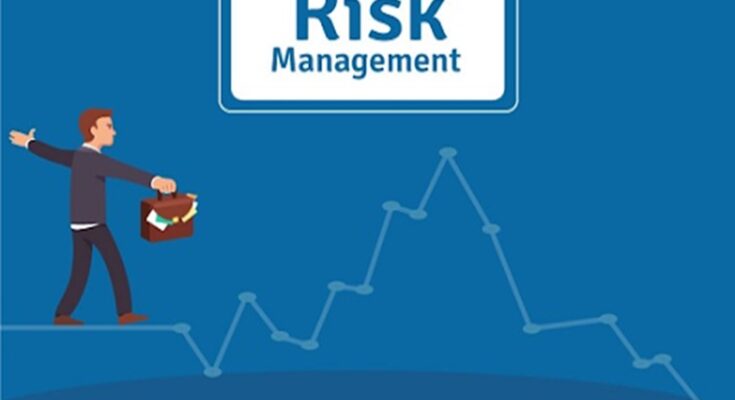Navigating through today’s ever-evolving business environment demands prioritized management of credit risk for all financial institutions and organizations. Credit risk software has emerged as a game-changer to streamline this critical process and for this many banks turn to BankPoint. This article highlights the significant advantages of employing credit risk software and explains how it reinforces risk management, enriches decision-making, and guarantees financial stability. By leveraging ground-breaking technology, businesses can proficiently diminish credit risks and establish a substantial competitive advantage.
Streamlined Risk Assessment
Credit risk software optimizes the risk evaluation procedure by automating the gathering, analysis, and surveillance of data. It allows financial entities to gauge the credit viability of borrowers, scrutinize their financial status, and pinpoint impending risks. Credit risk software enhances the evaluation process by consolidating and structuring voluminous data, thereby conserving time and resources. The software employs sophisticated algorithms and forecasting modeling methods to create precise risk scores and ratings, furnishing crucial intelligence for professionals in risk management.
Enhanced Decision-Making
Decisive action plays an essential role in managing credit risk. Credit risk software bolsters decision-making by supplying extensive and real-time data regarding borrowers’ credit portfolios, repayment records, and financial indices. This analytics-focused approach enables risk management experts to make enlightened decisions pertaining to credit confirmations, credit thresholds, and risk susceptibility. Furthermore, the software aids in conducting scenario analysis and stress testing, allowing institutions to evaluate the potential effects of unfavorable market scenarios and take preemptive action.
Improved Portfolio Management
Credit risk software holds a key position in portfolio management, equipping organizations with the ability to proficiently monitor and analyze their credit portfolios. The software offers an encompassing perspective of the portfolio’s risk profile, shedding light on possible concentration risks and flagging high-risk accounts. With its capabilities to monitor portfolios in real-time and provide immediate reporting, risk management specialists can pinpoint early indicators of risk, act promptly, and restructure the portfolio when needed. By gaining an in-depth understanding of their credit exposures, organizations can fine-tune risk-adjusted returns, allocate resources productively, and manage credit risks proactively.
Regulatory Compliance
In the present scenario of rigorous regulatory demands, it’s imperative for organizations to comply with industry standards. Credit risk software aids organizations in adhering to regulatory necessities by offering potent risk management frameworks and reporting abilities. The software supports the production of uniform reports, risk dashboards, and audit trails, endorsing transparency and responsibility. It facilitates compliance with regulatory directives, such as Basel III and IFRS 9, by automating risk computations, stress testing, and credit impairment evaluations. By leveraging credit risk software, businesses can stay abreast of regulatory modifications, lessen compliance risks, and display a robust dedication to risk governance.
Scalability and Flexibility
Credit risk software provides scalability and adaptability to cater to the ever-changing demands of organizations. Regardless of the organization’s size, from a petite financial establishment to a vast multinational corporation, the software can be customized to meet unique requirements. It is capable of managing escalating data volumes, adjusting to fluctuating market situations, and adopting new risk models. Moreover, credit risk software seamlessly amalgamates with pre-existing systems, such as core banking infrastructures and data repositories, guaranteeing uninterrupted data circulation and information interchange.
Advanced Analytics and Reporting
Credit risk software utilizes the strength of sophisticated analytics and reporting features to deliver profound insights into credit risk profiles. It employs data illustration tools, interactive dashboards, and customizable reports to display intricate risk data in an accessible format. Risk management specialists can effortlessly spot trends, patterns, and emerging risks, which facilitates proactive decision-making. Moreover, the software aids in conducting portfolio stress tests, scenario analyses, and hypothetical simulations, enabling organizations to gauge the potential repercussions of diverse risk scenarios.
Conclusion
Credit risk software is a crucial asset for organizations aiming to streamline their risk management protocols. By leveraging this advanced technology and data analytics, businesses can effectively predict and mitigate credit risks. The software’s strength lies in its capacity to process and analyze vast data, convert it into actionable insights, and maintain financial stability in today’s complex business landscape.
In addition, credit risk software provides a competitive advantage to businesses by helping them make data-driven decisions. It ensures regulatory compliance in an environment where regulations are continually evolving, thereby reducing regulatory risks and enhancing trust with stakeholders. Overall, credit risk software offers a comprehensive approach to credit risk management, boosting operational efficiency and decision-making, securing financial stability, and offering a tangible competitive edge.




